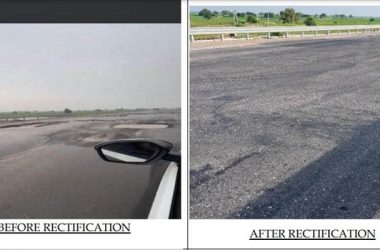In a recent statement to the Lok Sabha, Union Minister of Road Transport & Highways Nitin Gadkari outlined the progress made in improving emergency medical services and road safety across the nation’s National Highways. The update highlights increased deployment of ambulances and a range of road safety initiatives designed to enhance safety for road users and pedestrians.
Ambulance Deployment
Gadkari confirmed that ambulances have been a critical part of the Incident Management System, deployed strategically on National Highways to provide swift emergency response. The number of ambulances deployed has steadily risen over the past three years:
- FY 2021-22: 930 ambulances
- FY 2022-23: 1,003 ambulances
- FY 2023-24: 1,074 ambulances
These ambulances are stationed at toll plazas or other suitable locations, with a general guideline of one ambulance for every 50-60 kilometers of highway, depending on the road stretch. The field offices and consultants routinely inspect the ambulances to ensure both equipment and manpower are in place, guaranteeing readiness for emergencies.
Safety Measures on Highways
Road safety has become a cornerstone of highway development projects. The inclusion of road safety measures begins at the Detailed Project Report (DPR) stage, with safety consultants and auditors providing expertise. A key milestone came on September 22, 2022, when the completion of safety works was made mandatory for the issuance of the Provisional Completion Certificate.
To further strengthen safety, financial powers have been delegated to Regional Officers for the construction of Foot over Bridges (FoBs) and the installation of lifts and ramps. Additionally, pedestrian markings, footpaths, and street lighting are now standard features in urban and inhabited areas along National Highways, ensuring the safety of pedestrians.
Public Awareness and Educational Campaigns
The Union Minister also discussed the wide range of public awareness campaigns organized to enhance road safety. Every year, Road Safety Week is observed with a variety of activities aimed at educating road users, including walkathons, exhibitions, essay writing competitions, and street plays. Pamphlets and banners are distributed at toll plazas and other strategic points to promote safe driving behaviors.
Special programs have also been designed for younger audiences, such as school and college students, through quizzes, drawing competitions, and essay writing contests. Road safety education extends to drivers, with health and eye check-up camps being organized for truck and bus drivers on National Highways. These initiatives are complemented by ongoing social media campaigns that regularly spread road safety messages.
Enforcement of Safety Regulations
Special enforcement drives focus on critical issues such as overloading, speeding, unauthorized parking, and drunk driving. These efforts are supported by the police and aim to reduce accidents caused by risky behaviors.
Gadkari’s statement underscores the government’s commitment to improving road safety infrastructure and emergency services, marking a significant step forward in ensuring the safety of all who travel on the nation’s highways.








